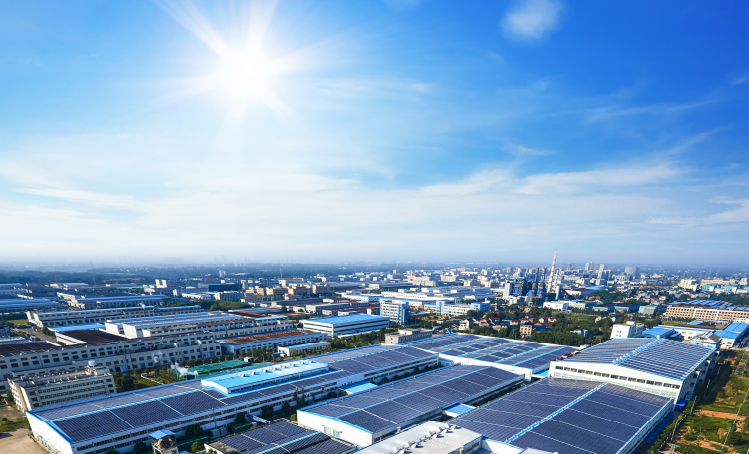Views: 40 Author: Site Editor Publish Time: 2024-06-26 Origin: Site







PV power generation or solar power generation has of late gained much attention from businesses due to the enormous amount of reduction in operational costs that comes with it. In case of organizations using a lot of electricity, controlling of the electricity expenses affects the ability to increase the level of profits. There is immense potential for pv rooftop systems for enterprises that have a large open space at the top; high load bearing capacity; little shadow impact ;and high electricity consumption.

With regard to the installation of these systems, as well as their maintenance, organizations such as Changzhou Powersourcing can supply every relevant piece of equipment, undertake the installation of the systems and further offer maintenance services. This implies that business people can be able to enjoy the advantages by just making simple purchase without having to undertake capital investment. Further, firms also can utilize the tariffs by deploying, for example, otherwise-empty roofs, to make additional money.
For instance, $10 Million spent on electricity bill may be cut to twenty five to thirty percent from the installation of rooftop PV systems which in turn cuts set operating expenses.
1. Reduction in Energy Costs: PV and energy storage systems enable the firm to capture renewable solar energy to minimised its dependence on conventional power source hence lowering energy costs.
2. Alleviating Electricity Consumption Pressure: hing is, with the use of electricity produced by PV systems, demands for electricity for production can be significantly reduced by businesses.
3. Lowering Electricity Expenses: High energy utilizing companies can substantially cut on electricity costs while on the same note make profits out of selling electricity back to the grid. PV installation on otherwise unused rooftops also help in arresting stagnated fixed assets by improving income generation.

4. Promoting Energy Saving and Emission Reduction: Another reason for putting up PV systems is the objectives of energy conservation and emission reduction; it results in reduced Carbon dioxide emissions, as well as an enhanced brand reputation.
5. Increasing Environmental Comfort: At the same time, it is also beneficial as the panels will reduce the temperatures within buildings, as an insulating factor, thereby cutting on expenses such as those incurred on air conditioners and fans.
6. Enhancing Power System Stability and Productivity: Energy storage distributed power can reduce variations in photovoltaic power generation, and at the same time, it operates stably in supply and manufacturing processes, including instances of power loss or constraint.
7. Creating Virtual Power Plants: Virtual power plants allow for the coordination of new sources of power and the various related distributed energy systems and associated subsystems to offer steady, predictable power and increased power system reliability.
8. Participation in Demand Response Programs: Through changing the consumption of electricity depending on the market prices or promotions, they are in a position to reduce spending on electricity. Such activities can also make organizations receive other incentives from the power providers or the government.
9. Developing Zero-Carbon Parks: The potential benefits include improving corporate image, lowering energy consumption, increasing efficiency, driving technology advancement, tapping new market, gaining government support and tax concession, talent attraction and retaining and industrial transformation. With the measures to improve the share of renewable electricity in the park, together with smart grid and virtual power plant approaches, effective power dispatch and regulation for the consideration of carbon peak and neutralization objectives can be attained.
10. Emergency Disaster Preparedness: Using PV energy storage systems can minimize disruption of operations during natural calamities or any other disaster, as an extra source of electricity.
1. Heavy Manufacturing Enterprises: Other industries for example steel, chemicals as well as paper manufacturing industries use considerable amounts of electricity in their operations and equipment.
2. Large-Scale Manufacturing Enterprises: Such industries as the car manufacturing industries and electronics manufacturing industries require huge quantities of electricity to continue with production processes.
3. Data Centers and Enterprise Servers: These facilities require a huge amount of power to both maintain and run data centres and servers in order to keep networks and information systems running smoothly.
4. Large Commercial Facilities: Commercial establishments like, shopping malls, supermarkets, hotels and the other large establishment use large amount of power in running electrical appliances and lights.
5.Agricultural Irrigation Systems: Agricultural operations on a big scale consume large amounts of electrical energy for pumps, and the irrigation equipment.

The utilities of these enterprises are characterised by relatively high power demands resulting from large production capacities, energy-demanding equipment, and numerous electrical loads. As such they are major beneficiaries of national subsidy policies and they are vested with many incentives in form of subsidies.
PV energy storage technology can bring extensive performance to the enterprises cost reduction, higher productivity, increased revenue, energy saving, and emission reduction. In the light of current technological developments and favourable policies, the application of PV energy storage technology will further provide new prospects as well as issues to the enterprise in the future.
What Approach Should One Take To Select The Proper Capacity For Solar Energy Storage Batteries?
Is It Worth Importing PV Panels From China And Selling Them In Your Country?
How to Calculate Solar System ROI and Optimize Long-Term Returns?
PV industry loses $6.5 billion: reinvention or obsolescence?
Solar Carports in Europe: Costs, Installation, and Tax Incentives
What Is the Better Method for Connecting Solar Panels Either Series Way or Parallel?